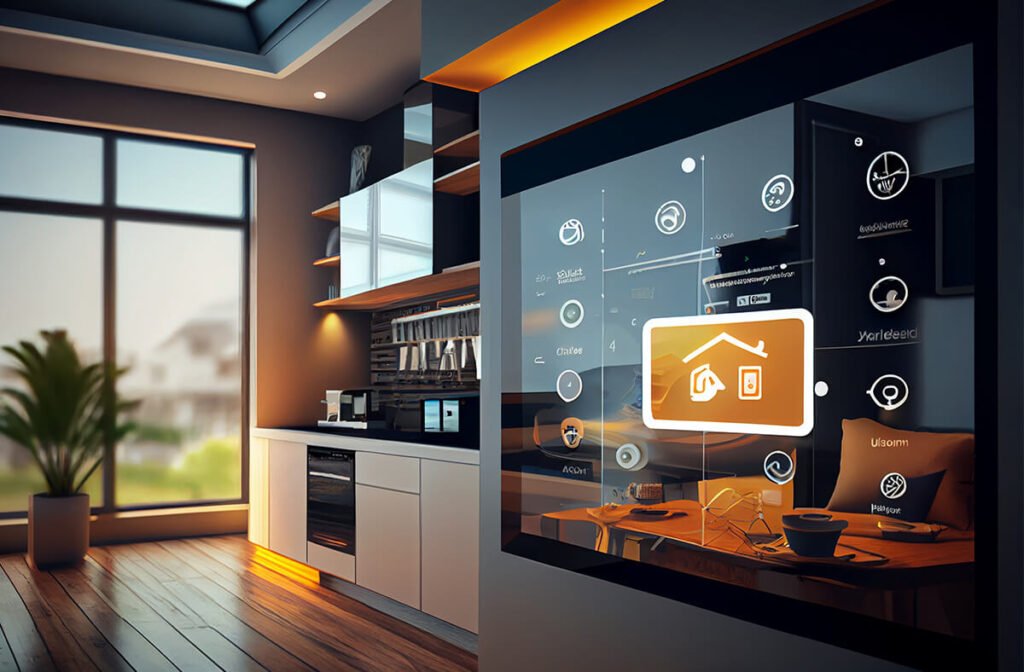The Rise of Smart Homes: Integrating Technology into Modern Architecture
In recent years, the concept of smart homes has evolved from a futuristic idea into a tangible reality. With advancements in technology, modern architecture is increasingly integrating smart features that enhance convenience, security, and sustainability. This transformation is not just a trend but a significant shift in how we design and interact with our living spaces.
What Are Smart Homes?
Smart homes leverage the Internet of Things (IoT) to connect various devices and systems within a house. This connectivity allows homeowners to control and automate different aspects of their home environment through smartphones, tablets, or voice commands. From lighting and heating to security and entertainment, smart homes offer a seamless, interconnected living experience.

Key Features of Smart Homes
Home Automation
Home automation is at the core of smart homes. It includes systems that control lighting, climate, entertainment systems, and appliances. Automation can be tailored to individual preferences, ensuring optimal comfort and energy efficiency. For instance, smart thermostats learn homeowners’ schedules and adjust temperatures accordingly, reducing energy consumption.
Enhanced Security
Smart home security systems provide advanced protection with features such as remote monitoring, automated door locks, and security cameras. Homeowners can receive real-time alerts on their devices if any suspicious activity is detected, allowing for immediate action. This level of security is a significant upgrade from traditional systems, providing peace of mind to residents.
Energy Efficiency
Smart homes are designed to be energy-efficient. Devices such as smart thermostats, lighting systems, and appliances can be programmed to operate at optimal times, reducing unnecessary energy use. Solar panels integrated with smart home technology can also store and manage energy usage effectively, contributing to a greener environment.
The Role of Architecture in Smart Homes
Modern architecture plays a crucial role in the integration of smart home technology. Architects and designers are now considering technology from the early stages of planning and design to ensure seamless incorporation. This includes:
Structural Design
Architects design homes with built-in spaces for wiring and smart devices, ensuring that technology does not disrupt the aesthetic appeal. This integration includes hidden compartments for routers, hubs, and other essential tech components.
Sustainable Materials
The choice of materials in modern architecture also supports the smart home ecosystem. Sustainable and energy-efficient materials are preferred, aligning with the eco-friendly nature of smart homes. These materials help in maintaining optimal indoor climates and reducing energy waste.
Flexible Layouts
Smart homes often feature flexible layouts that can adapt to changing needs. Open floor plans and multifunctional spaces are common, allowing for easy modification and the addition of new technologies. This flexibility is crucial as smart home technology continues to evolve rapidly.
The Future of Smart Homes
The future of smart homes looks promising, with continuous advancements in technology. Upcoming trends include:
Artificial Intelligence (AI) Integration
AI will play a significant role in enhancing the capabilities of smart homes. From predictive maintenance to advanced voice assistants, AI will make homes more intuitive and responsive to the needs of their inhabitants.
Enhanced Connectivity
The rollout of 5G networks will further enhance the connectivity of smart homes, enabling faster and more reliable communication between devices. This will lead to smoother automation and more sophisticated home management systems.
Health and Wellness
Future smart homes will increasingly focus on health and wellness. This includes air quality monitors, smart beds that track sleep patterns, and kitchen appliances that suggest healthy recipes based on dietary preferences.
Conclusion
The rise of smart homes marks a significant shift in modern architecture, blending technology with design to create living spaces that are not only convenient and secure but also sustainable. As technology continues to advance, the integration of smart features in homes will become even more seamless, transforming the way we live and interact with our environment. Embracing this trend, architects and designers are at the forefront of creating the homes of the future, where technology and comfort coexist harmoniously.


